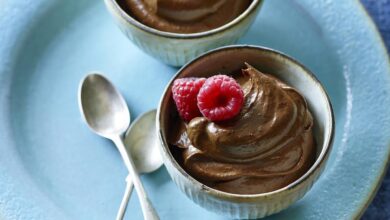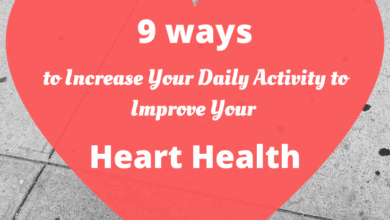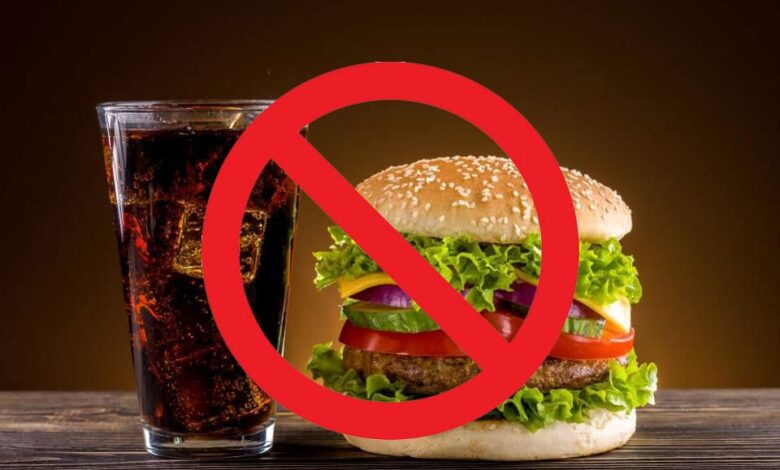
Cutting out 200 calories a day and exercising can help you stay heart healthy. This blog post dives deep into the benefits of this combined approach, exploring strategies for calorie reduction, effective exercises, and the synergistic impact on your heart’s well-being. We’ll uncover practical tips and actionable strategies to make this lifestyle change a reality, along with potential challenges and solutions.
Get ready to learn how simple adjustments can lead to significant improvements in your cardiovascular health!
Maintaining a healthy heart is paramount to overall well-being. Factors like diet and exercise play a crucial role in preventing heart disease. A 200-calorie reduction combined with regular exercise can significantly contribute to weight management and improved cardiovascular health. This blog post will provide you with the knowledge and tools to implement these strategies effectively.
Introduction to Heart Health
Maintaining a healthy heart is crucial for overall well-being. Cardiovascular health encompasses the proper functioning of the heart, blood vessels, and blood, enabling efficient circulation throughout the body. A healthy cardiovascular system delivers oxygen and nutrients to all tissues, supporting vital bodily functions. Neglecting this system can lead to various health complications.Heart disease, a significant global health concern, stems from a combination of factors, including genetics and lifestyle choices.
While genetics play a role, lifestyle factors like diet, exercise, and stress levels significantly influence heart health. Unhealthy habits can contribute to the buildup of plaque in arteries, increasing the risk of heart attacks and strokes.
Calorie Deficit and Weight Management
Managing weight is a key aspect of heart health. A calorie deficit, achieved through a combination of a balanced diet and regular exercise, plays a vital role in weight management. A calorie deficit occurs when the number of calories consumed is less than the number of calories burned. This difference allows the body to utilize stored energy, leading to gradual weight loss.
A steady, moderate weight loss approach is often more effective and sustainable than rapid weight loss methods. For example, losing 1-2 pounds per week is a generally healthy and achievable goal. This sustainable approach minimizes the risk of rebound weight gain and promotes long-term healthy habits.
Types of Exercise and Heart Health Benefits
Regular physical activity is essential for maintaining a healthy heart. Exercise strengthens the heart muscle, improves blood circulation, and helps manage blood pressure and cholesterol levels. Different types of exercise offer various benefits.
| Exercise Type | Benefits for Heart Health | Approximate Calorie Burn Rate (per 30 minutes) | Example Activities |
|---|---|---|---|
| Aerobic Exercise | Improves cardiovascular fitness, strengthens the heart, and helps lower blood pressure. | 200-400 calories | Brisk walking, jogging, swimming, cycling, dancing |
| Strength Training | Builds muscle mass, which boosts metabolism and helps maintain a healthy weight. Stronger muscles support better circulation. | 150-300 calories | Lifting weights, using resistance bands, bodyweight exercises |
| Flexibility and Balance Exercises | Enhances range of motion, improves posture, and reduces the risk of falls, which can be beneficial for cardiovascular health. | 100-200 calories | Yoga, Pilates, Tai Chi |
A balanced approach to exercise, including aerobic, strength training, and flexibility exercises, provides comprehensive benefits for heart health.
Calorie Reduction Strategies: Cutting Out 200 Calories A Day And Exercising Can Help You Stay Heart Healthy
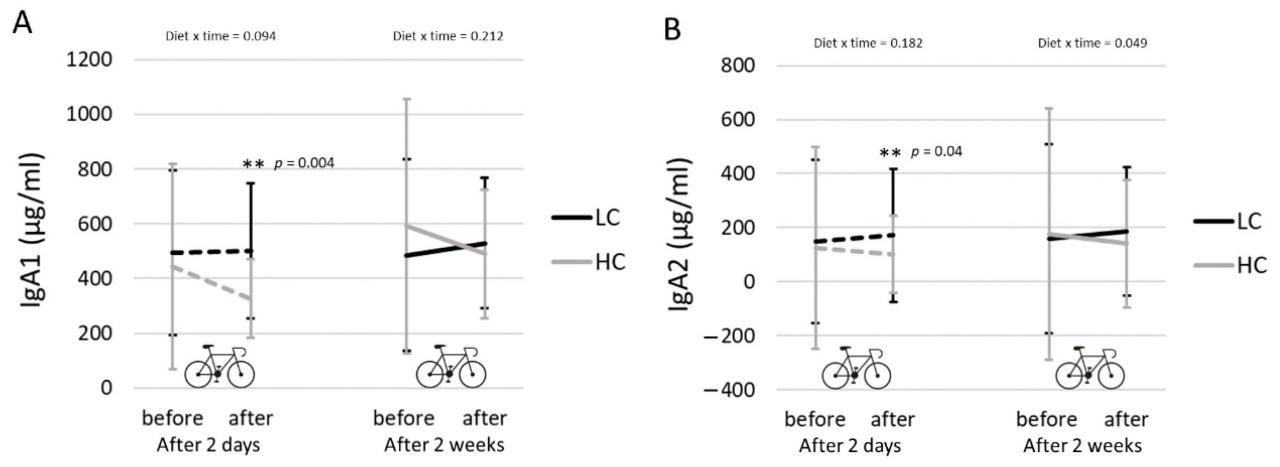
Reducing your daily calorie intake by 200 calories is a significant step towards a healthier heart. This can be achieved through mindful choices in your diet without feeling deprived. Key strategies involve swapping high-calorie foods for healthier alternatives, controlling portion sizes, and practicing mindful eating. These approaches promote gradual changes, making it easier to sustain long-term.This section will explore practical strategies to reduce calorie intake by 200 calories daily, without compromising your nutritional needs.
It emphasizes healthy substitutions, portion control, and mindful eating techniques to support a heart-healthy lifestyle.
Healthy Substitutions
Adopting healthier alternatives for high-calorie foods and drinks is crucial for achieving a 200-calorie reduction without sacrificing essential nutrients. Replacing sugary beverages with water, unsweetened tea, or low-fat milk options can significantly decrease calorie intake. For instance, a large soda can contain hundreds of calories, whereas a glass of water is calorie-free. Similarly, opting for lean protein sources like grilled chicken or fish instead of fried options, and choosing whole grains over refined grains, can make a substantial difference in calorie intake.
Portion Control Techniques
Controlling portion sizes is a fundamental aspect of calorie reduction. Using smaller plates and bowls can trick your brain into feeling satisfied with a smaller amount of food. Paying attention to serving suggestions on food packaging and utilizing measuring cups and spoons can aid in precise portion control. A simple technique is to put half of your meal on a separate plate to prevent overeating.
Portion control isn’t just about reducing quantity; it’s about making conscious choices about how much you eat.
Mindful Eating Practices
Mindful eating involves paying attention to your body’s hunger and fullness cues. Eating slowly and savoring each bite can help you recognize when you’re full, preventing overeating. Avoid distractions like television or work while eating. Focus on the taste, texture, and aroma of your food. This mindful approach fosters a deeper connection with your body’s signals, leading to more balanced and satisfying meals.
Calorie Comparison Table
The following table illustrates the calorie difference between some common meals and their healthier alternatives:
| Meal | Approximate Calories | Healthier Alternative | Approximate Calories |
|---|---|---|---|
| Large Pizza Slice (with cheese and toppings) | 500 | Small Salad with grilled chicken or fish | 250 |
| Fried Chicken Sandwich | 600 | Grilled Chicken Salad Sandwich | 350 |
| Large French Fries (with ketchup) | 450 | Baked Sweet Potato Fries | 200 |
| Soda (large) | 250 | Water | 0 |
This table provides a general comparison. Actual calorie counts can vary depending on specific ingredients and preparation methods.
Exercise Recommendations for Heart Health
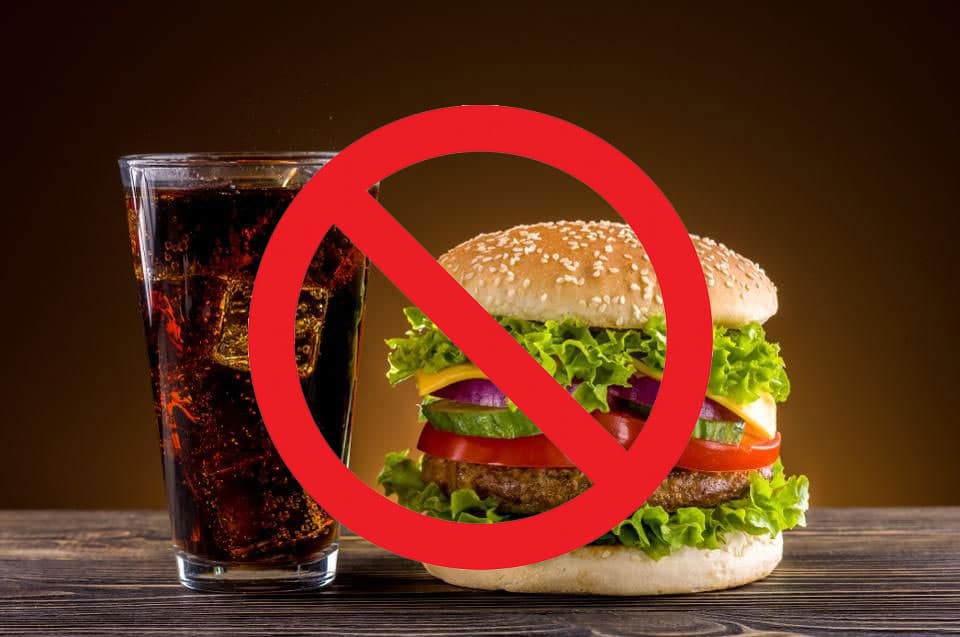
Staying heart-healthy involves more than just diet; regular exercise plays a crucial role in maintaining a strong cardiovascular system. Consistent physical activity strengthens the heart muscle, improves blood flow, and helps manage weight, all contributing to a lower risk of heart disease. This section will detail the types of exercises beneficial for heart health, the importance of routine and progression, and how intensity impacts calorie expenditure.
Crucially, we’ll also discuss the vital role of strength training in a comprehensive approach.
Cardiovascular Exercise Options
Regular cardiovascular exercise is essential for improving heart health. These activities increase heart rate and breathing, strengthening the heart and improving blood circulation. A variety of exercises can contribute to this goal.
- Brisk walking: A simple and accessible way to increase heart rate, walking briskly for at least 30 minutes most days of the week can significantly improve cardiovascular health.
- Running: A more intense cardio option, running strengthens the heart and lungs, burning more calories than walking. Running can be adapted to various levels of fitness.
- Cycling: Cycling, whether on a stationary bike or outdoors, provides a low-impact cardio workout. It strengthens the cardiovascular system and improves overall fitness.
- Swimming: A full-body workout that’s gentle on the joints, swimming is an excellent cardio exercise that improves cardiovascular health and endurance.
- Dancing: A fun and engaging way to get your heart pumping, dancing is a great cardio exercise that can be enjoyed socially.
Importance of Consistency and Progression
Consistency in exercise is key to achieving and maintaining heart health. A regular routine, even if it starts small, is more effective than sporadic intense workouts. Gradual progression is equally important. Increasing the duration, intensity, or frequency of workouts gradually helps the body adapt and prevents injuries. A steady increase in activity level over time is more sustainable and less likely to lead to burnout.
Exercise Intensity and Calorie Burn
The intensity of exercise directly affects calorie burn. Moderate-intensity activities, such as brisk walking or cycling, burn calories at a moderate rate. High-intensity activities, like running or interval training, burn significantly more calories in a shorter period. Understanding these differences can help tailor workouts to individual needs and goals. For example, someone aiming for significant calorie reduction might incorporate interval training, while someone focusing on general fitness might prefer a steady, moderate-intensity routine.
Cutting out 200 calories a day and getting regular exercise is a great way to keep your heart healthy. However, some people might consider alternative methods, like switching to e-cigarettes, thinking it could potentially lengthen their lives, as discussed in this article switching to e cigarettes can lengthen your life. Ultimately, a balanced approach that includes a healthy diet and consistent physical activity remains the most reliable way to maintain a healthy heart.
Incorporating Strength Training
Strength training is crucial for overall health and, importantly, for heart health. Building muscle mass increases metabolism, which helps burn more calories even at rest. This contributes to weight management, reducing the strain on the heart. Strength training also improves bone density, reducing the risk of osteoporosis, which is often a concern as we age.
Sample Weekly Exercise Plan
This sample plan provides a framework for incorporating various activities into a weekly routine. Adjust the plan based on your fitness level and preferences. Remember to consult a healthcare professional before starting any new exercise program.
| Day | Activity | Duration/Intensity |
|---|---|---|
| Monday | Brisk Walking | 30 minutes, moderate intensity |
| Tuesday | Strength Training (legs, core) | 45 minutes, moderate intensity |
| Wednesday | Cycling | 45 minutes, moderate intensity |
| Thursday | Rest | Full rest |
| Friday | Swimming | 30 minutes, moderate intensity |
| Saturday | Running (interval training) | 30 minutes, high intensity |
| Sunday | Yoga or stretching | 60 minutes, low intensity |
The Combined Effect of Calorie Reduction and Exercise
Combining calorie reduction with regular exercise creates a powerful synergy for heart health. It’s not just about losing weight; it’s about improving overall cardiovascular function, lowering blood pressure, and enhancing the body’s ability to manage blood sugar. This approach tackles multiple risk factors simultaneously, leading to significant improvements in heart health.This synergistic effect stems from the unique ways calorie reduction and exercise influence the body.
Calorie reduction helps manage overall energy intake, while exercise improves metabolism and strengthens the heart muscle. When combined, these strategies lead to a more profound and sustained impact on cardiovascular health.
Weight Loss Impact
Calorie reduction alone can promote weight loss, but exercise significantly enhances the process and its benefits. Exercise boosts metabolism, leading to a higher calorie burn even when at rest. Furthermore, exercise helps build lean muscle mass, which in turn increases resting metabolism. This combined approach accelerates weight loss, which is crucial for reducing strain on the heart. For example, a study published in the Journal of the American Heart Association showed that individuals who combined calorie restriction with exercise experienced significantly greater weight loss compared to those who relied solely on calorie restriction.
Taking a 200-calorie cut and hitting the gym are great ways to keep your heart in tip-top shape. It’s inspiring to see how Australia is leading the way in preventative health, like using the HPV vaccine to drastically reduce cervical cancer rates. Australia using hpv vaccine to eliminate cervical cancer shows us the power of proactive measures, and that same dedication to well-being can definitely translate to a healthier heart by making smart choices about diet and exercise.
Blood Pressure Impact
Both calorie reduction and exercise independently lower blood pressure. Calorie reduction can help manage overall blood volume, while exercise strengthens the heart muscle, improving its pumping efficiency. The combined effect is amplified. Research has shown that individuals who implement both strategies experience more significant reductions in blood pressure than those who only employ one. This is particularly important for people with hypertension, as it helps manage blood pressure more effectively.
A meta-analysis published in the Hypertension journal highlighted this combined effect.
Effectiveness Comparison
Calorie reduction alone can lead to some improvement in heart health, but the combination with exercise is demonstrably more effective. Exercise strengthens the heart, improves circulation, and helps regulate blood sugar levels. This multifaceted approach addresses a wider range of heart health risk factors, leading to more comprehensive and sustainable improvements. In practical terms, an individual might lose weight through calorie restriction alone, but the combination with exercise will likely improve their overall cardiovascular health more substantially.
Scientific Evidence
Numerous studies have shown the significant benefits of combining calorie reduction and exercise for heart health. A meta-analysis published in the British Journal of Sports Medicine, for example, analyzed several studies and confirmed that the combination of calorie reduction and exercise significantly reduces cardiovascular risk factors. These findings support the recommendation of combining these strategies for optimal results.
Long-Term Benefits of a Lifestyle Program
| Aspect | Improved Cardiovascular Function | Weight Management | Blood Pressure Control |
|---|---|---|---|
| Improved Cardiovascular Function | Reduced risk of heart disease, stroke, and other cardiovascular problems. | Reduced strain on the heart, leading to improved pumping efficiency. | Lowered blood pressure, reducing stress on blood vessels. |
| Weight Management | Lowering excess weight helps reduce the workload on the heart. | Improved body composition (more muscle, less fat). | Weight loss can contribute to improved blood pressure management. |
| Blood Pressure Control | Reduced risk of hypertension-related complications. | Improved blood pressure management, contributing to overall heart health. | Improved blood vessel health, lowering risk of complications. |
| Improved Overall Health | Increased energy levels and overall well-being. | Enhanced quality of life through improved physical function and self-esteem. | Reduced risk of diabetes and other chronic conditions. |
Potential Challenges and Solutions
Embarking on a journey towards heart health through dietary adjustments and exercise is commendable. However, the path isn’t always smooth. Understanding potential obstacles and having strategies to overcome them is crucial for sustained success. This section delves into common challenges and practical solutions for maintaining a healthy lifestyle.Navigating the complexities of a new routine requires proactive planning and a flexible approach.
Addressing potential setbacks with well-defined strategies will greatly enhance the likelihood of achieving and maintaining long-term health improvements.
Dealing with Cravings
Sustaining a 200-calorie reduction and a consistent exercise regimen often requires managing cravings. These can be triggered by various factors, from emotional stress to the body’s need for specific nutrients.Identifying the root causes of cravings is key. Are they physical (a need for essential nutrients) or emotional (stress or boredom)? Strategies for managing cravings include mindful eating, replacing unhealthy cravings with healthier options, and maintaining a balanced diet.
Preparing healthy snacks in advance can prevent impulsive choices.
Maintaining Motivation
Maintaining motivation throughout the journey is vital for long-term success. Motivation can fluctuate, influenced by various factors such as personal circumstances, social pressures, and even physical fatigue.Building a support system can be invaluable. Sharing the journey with friends, family, or joining a support group can provide encouragement and accountability. Setting realistic goals and celebrating milestones are important components of maintaining motivation.
Regularly acknowledging progress, no matter how small, can bolster morale. Connecting the positive effects of the plan to personal values (e.g., increased energy levels, improved sleep) can reinforce commitment.
Overcoming Plateaus
Plateaus in weight loss or exercise progress are common. The body adapts to the routine, making further progress challenging.Adjusting the exercise routine or increasing the intensity can help break plateaus. Exploring different types of workouts or incorporating interval training can provide a new stimulus for the body. Re-evaluating the calorie reduction plan, ensuring it’s still appropriate for individual needs and activity levels, is also crucial.
Adjusting the plan to account for increased muscle mass, which may lead to a plateau, is essential.
Seeking Professional Guidance
A healthcare provider or registered dietitian can offer personalized guidance and support. They can assess individual needs, create tailored plans, and monitor progress.Professional guidance can significantly enhance the effectiveness of a plan. A healthcare provider can identify potential underlying health conditions that may impact the plan and ensure safety. A dietitian can provide personalized dietary recommendations to support the calorie reduction and exercise goals, ensuring nutrient balance and addressing specific dietary needs.
Tracking Progress and Adapting
Regularly tracking progress is essential for identifying areas that need adjustment. This could involve monitoring weight, measurements, or energy levels.Utilizing tools such as food diaries, fitness trackers, or online resources can facilitate progress monitoring. Regular check-ins with a healthcare professional are essential to assess progress, identify potential issues, and make necessary adjustments to the plan. Flexibility and adaptability are critical.
The plan should be viewed as a dynamic tool that needs to be adjusted as the individual progresses and their needs change.
Illustrative Examples of Healthy Meal Plans
Embarking on a heart-healthy journey often involves mindful choices about what you eat. These examples demonstrate how to reduce daily calorie intake by approximately 200 calories while maintaining a balanced and delicious diet. This isn’t about deprivation, but about smart swaps and mindful portions to support your heart health goals.These meal plans are designed as starting points. Adjusting portion sizes, swapping ingredients, and incorporating your preferred flavors can create personalized meals that align with your dietary needs and preferences.
Remember to consult with a healthcare professional or registered dietitian for personalized advice.
Cutting out 200 calories a day and getting regular exercise are key for maintaining a healthy heart, but the quality of diet for older adults has unfortunately declined. This is often a result of changing taste preferences and decreasing physical activity. To address this, check out this helpful article on how to improve dietary choices for seniors quality of diet for older adults has declined heres how to fix it.
Ultimately, making smart dietary choices and exercising consistently will keep your heart healthy as you age.
Sample Meal Plan 1: Mediterranean Inspired
This meal plan emphasizes fresh ingredients, healthy fats, and lean protein. It aims for a balanced intake of carbohydrates, protein, and healthy fats.
- Breakfast (approx. 350 calories): Greek yogurt (1 cup) with berries (1/2 cup), sliced almonds (1/4 cup), and a sprinkle of cinnamon.
- Lunch (approx. 450 calories): Large salad with mixed greens, grilled chicken breast (4oz), chopped cucumber, tomatoes, bell peppers, and a light vinaigrette dressing. A small whole-wheat pita bread can be added for extra fiber.
- Dinner (approx. 500 calories): Baked salmon (4oz) with roasted asparagus (1 cup) and quinoa (1/2 cup). A small side salad with lemon juice and olive oil can be added.
- Snacks (approx. 200 calories): Apple slices with peanut butter (2 tablespoons), or a handful of mixed nuts (1/4 cup).
This plan incorporates lean protein, whole grains, and plenty of fruits and vegetables. The healthy fats in the almonds and the salmon provide essential nutrients for heart health.
Sample Meal Plan 2: Lean Protein & Veggie Focus, Cutting out 200 calories a day and exercising can help you stay heart healthy
This meal plan prioritizes lean protein sources and ample vegetables to keep you full and energized.
- Breakfast (approx. 300 calories): Scrambled eggs (2) with spinach (1 cup) and whole-wheat toast (1 slice).
- Lunch (approx. 400 calories): Turkey breast (4oz) sandwich on whole-wheat bread with lettuce, tomato, and a light mustard. A side of baby carrots and a small apple.
- Dinner (approx. 500 calories): Lentil soup (1.5 cups) with a side salad (1 cup). The lentils provide protein and fiber.
- Snacks (approx. 200 calories): Plain yogurt (1 cup) with berries (1/2 cup) or a handful of almonds (1/4 cup).
This plan provides a balanced amount of nutrients, focusing on protein and vegetables, and promoting satiety to help reduce calorie intake without compromising on essential nutrients.
Sample Meal Plan 3: Vegetarian Delight
This vegetarian plan showcases delicious and nutritious options that prioritize plant-based protein and fiber.
- Breakfast (approx. 350 calories): Oatmeal (1/2 cup dry) with berries (1/2 cup) and nuts (1/4 cup). Add a small handful of pumpkin seeds for extra nutrients.
- Lunch (approx. 400 calories): Large salad with mixed greens, chickpeas (1/2 cup), chopped bell peppers, cucumber, and a light vinaigrette dressing. A small whole-wheat tortilla can be added.
- Dinner (approx. 500 calories): Vegetable stir-fry (1.5 cups) with brown rice (1/2 cup). The stir-fry provides a colorful mix of vegetables and protein.
- Snacks (approx. 200 calories): Edamame (1/2 cup) or a small handful of trail mix (1/4 cup).
This meal plan is a fantastic example of how to incorporate a variety of colorful vegetables into your diet.
Shopping List (Sample Meal Plan 1)
- Greek Yogurt
- Berries (strawberries, blueberries, raspberries)
- Almonds
- Cinnamon
- Mixed Greens
- Grilled Chicken Breast
- Cucumber
- Tomatoes
- Bell Peppers
- Light Vinaigrette Dressing
- Whole-wheat Pita Bread
- Salmon Fillet
- Asparagus
- Quinoa
Illustrative Examples of Exercise Routines
Staying heart-healthy involves a balanced approach that incorporates both cardiovascular and strength training exercises. These routines are designed to be adaptable to different fitness levels and preferences, allowing you to gradually increase intensity and duration over time. Consistency is key to seeing results and maintaining a healthy heart.
Cardiovascular Exercise Routine 1: Moderate Intensity
This routine focuses on sustained cardio activity for improved heart health and calorie burn. It’s suitable for beginners or those looking for a low-impact option.
- Warm-up (5 minutes): Light cardio like brisk walking, arm circles, and leg swings. This prepares the body for more intense activity and reduces the risk of injury.
- Cardio Workout (30 minutes): Choose activities like jogging on a treadmill, cycling at a moderate pace, or swimming laps. The key is to maintain a steady heart rate that feels challenging but manageable. Focus on maintaining good form to prevent injuries.
- Cool-down (5 minutes): Gradually decrease the intensity of your cardio, such as slowing your pace or reducing the resistance on your bike. Gentle stretching helps improve flexibility and reduces muscle soreness.
Strength Training Routine 2: Intermediate Intensity
This routine combines strength training exercises with cardiovascular elements, providing a more comprehensive approach to fitness.
- Warm-up (5 minutes): Dynamic stretching, like arm circles, leg swings, and torso twists. This helps improve blood flow and prepares the muscles for the workout.
- Strength Training (30 minutes): Perform compound exercises such as squats, lunges, push-ups, and rows. These exercises target multiple muscle groups simultaneously. Use weights appropriate for your strength level, aiming for 8-12 repetitions per set. Rest for 60-90 seconds between sets.
- Cardio Intervals (15 minutes): Alternate between high-intensity intervals (e.g., sprinting on a treadmill or biking at maximum resistance) and moderate-intensity recovery periods (e.g., brisk walking or light cycling). This approach burns more calories and strengthens the cardiovascular system.
- Cool-down (5 minutes): Static stretching, holding each stretch for 20-30 seconds. This helps improve flexibility and reduce muscle soreness.
Strength Training Routine 3: High Intensity Interval Training (HIIT)
This routine is designed to maximize calorie burn and improve cardiovascular fitness in a shorter time frame.
- Warm-up (5 minutes): Light cardio and dynamic stretching. This prepares the body for the high-intensity intervals.
- HIIT Circuit (20 minutes): Perform a series of exercises like burpees, mountain climbers, jump squats, and push-ups. Work at maximum effort for 30 seconds, followed by 60 seconds of rest or light activity. Repeat the circuit 4-6 times.
- Cool-down (5 minutes): Static stretching, holding each stretch for 20-30 seconds. This improves flexibility and reduces muscle soreness.
Last Point
In conclusion, embracing a lifestyle that combines mindful calorie reduction and regular exercise is a powerful step towards a healthier heart. By understanding the strategies for achieving a calorie deficit without sacrificing nutrition, choosing appropriate exercises, and maintaining consistency, you can significantly improve your heart health. Remember, consistency and gradual progression are key, and seeking professional guidance when needed can further enhance your journey.
Ultimately, taking proactive steps towards heart health empowers you to live a longer, healthier life.
